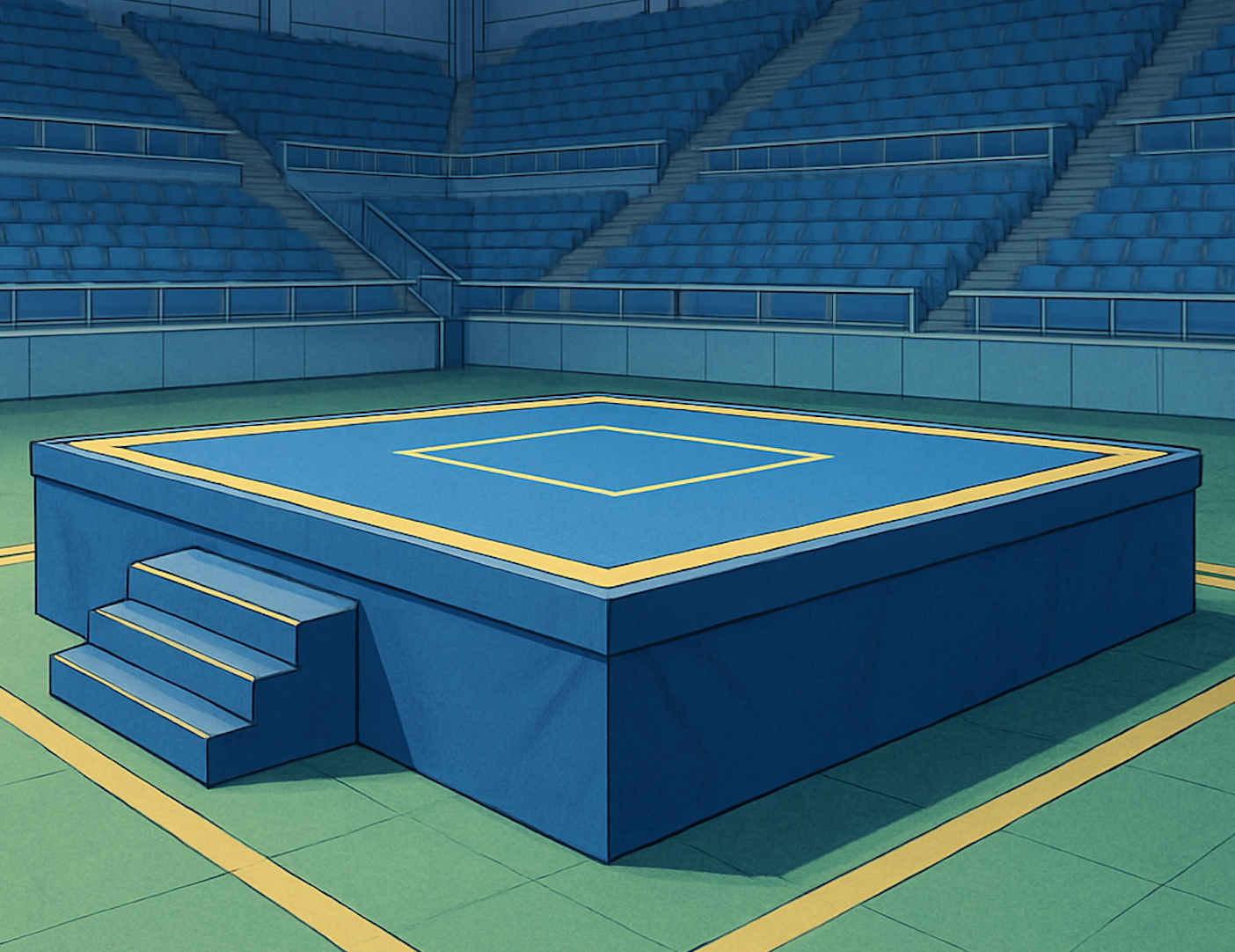How the Lei Tai Changes Sanda Kickboxing
How does the raised platform of the lei tai change how Sanda Athletes fight
Introduction
Sanda Kickboxing is a combat sport that has many health benefits with a strong emphasis on kickboxing and wrestling techniques. Sanda competitions are fought on a platform called a ‘Lei Tai”, this is unique in Sanda kickboxing and changes the way Sanda athletes need to fight.
What is a Lei Tai?
A lei tai is a raised platform that is usually twenty-four by twenty-four square feet and two to four feet high. A lei tai does not have ropes or barriers around the edge of the mat, unlike boxing rings or the octagon it is completely open.
The History of the Lei Tai
The lei tai can trace its roots back to Song dynasty (960-1279 AD). Historically lei tai’s have been used in martial arts challenges, duels and exhibition matches. These contests were usually full contact and with high stakes (no modern medicine). It’s believed that the lei tai didn’t have barriers for a couple of reasons; for the spectacle, so that the view of the fighters was not blocked and so a contestant could leave the lei tai if they were losing badly or chickened out.
When Sanda was developed the lei tai was included in the modern combat sport and rules around the raised platform codified. Modernizing this ancient Chinese tradition.
How the Lei Tai Affects the Way Sanda Athletes Fight
Emphasis on Throws and Ring-Outs
Athletes can win by throwing opponents off the platform or forcing them to step off. Tactical use of the edges is essential, as positioning can greatly influence the outcome of a match.
By controlling the boundaries, competitors can create opportunities to throws on and off the platform. It is important for athletes to be aware of their surroundings and strategically utilize the edges to maximize their scoring potential and secure a victory. Understanding these tactics can be the difference between winning and losing in competition.
Risk Management and Footwork
Because of the risk of bring ‘ringed out’ of the lei tai, there is a greater awareness of space and positioning on the platform. This constant awareness means that Sanda athletes must have excellent foot work and must have constant awareness of the the edges of the lei tai not just the opponent and leads to very different footwork strategies compared to fighting in the ring or cage.
Aggression and Ring Control
Because of the risk of being pushed off the lei tai athletes must be aggressive to stop the opponent from just walking them off the platform or need to have excellent defensive footwork to avoid the edge of the lei tai.
Comparison: Sanda on a Lei Tai vs. Sanda in a Ring or Cage
The lei tai usually forces the two combatants together forcing more throws and clinch work, this leads to more dynamic throws and positional battles and perfectly compliments the rules set of Sanda. Some more recent organizations have fights within a boxing ring, this usually leads to a more of a straight kickboxing match and removes the throws that make sanda such a unique and dynamic combat sport.
Conclusion
The lei tai, or raised platform, serves as a distinctive feature of Sanda kickboxing, differentiating it from other martial arts. Its elevation creates a unique dynamic, where fighters must consider their positioning, balance, and the risk of being knocked off, which adds an extra layer of challenge to each bout.
Understanding the lei tai is essential for understanding Sanda. The lei tai is the perfect marriage of tradition and modernization of combat sports, taking the ancient traditions of China and bringing them into the modern world.



